
I lived in Hollywood, once upon a time, on Poinsettia between Fountain and Santa Monica Blvd., not far from Melrose. It was the early '80s and I was working at a radio station on Sunset at North Genesee, across from the Screen Actors Guild. Ed Asner was the president of the guild then and I met him one afternoon, along with most of my co-workers, when SAG hosted an open house in the space it had just leased on the second floor of our building. This was around the time I was getting to know the Brown Derby at the intersection of Vine St. and Hollywood Blvd. Known locally as the Hollywood Derby, it was the radio station's go-to spot for good-bye and birthday and bon voyage lunches. The place always seemed to be bustling and I would never have guessed then that it would be gone forever within two or three years.
The original Brown Derby, a hat-shaped eatery on Wilshire, opened in 1926. The inspiration of screenwriter Wilson Mizner and producer Herbert Somborn, Gloria Swanson's second ex-husband, it is said to have begun with a dare. Mizner challenged Somborn, "If you know anything about food, you can sell it out of a hat." Originally known as The Little Hat, the restaurant was built by Mizner, Somborn and, allegedly, theater owner Sid Grauman and Jack Warner. Some of its first patrons were the greatest stars of the day: Mary Pickford,Charlie Chaplin, Will Rogers and Rudolph Valentino.
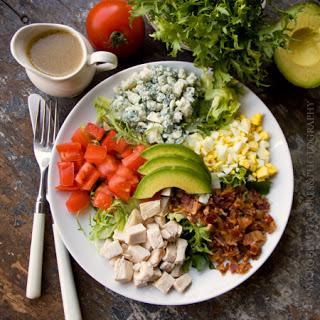
Cobb Salad
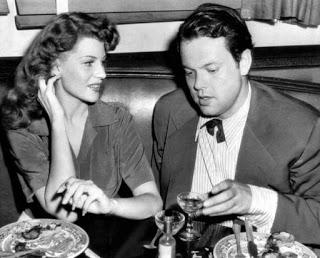
Rita and Orson at the Hollywood Derby
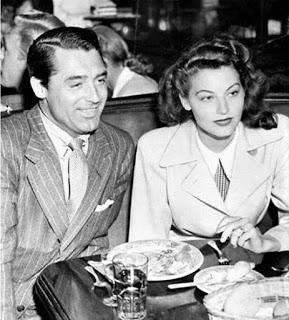
Cary and Ava at the Hollywood Derby
- In early1939, Clark Gable proposed to Carole Lombard at the Derby's table #5. The pair soon eloped to Kingman, Arizona, where they were married.
- In May 1942, Alfred Hitchcock and writer Gordon McDonell sat down over lunch and discussed the story that was to become one of the great Hitchcock classics, Shadow of a Doubt (1943).
- Rival gossip columnists Hedda Hopper and Louella Parsons lunched at the Derby daily at noontime. Each held court at her own table - on opposite sides of the room.
- An oft-repeated tale tells of the time in 1933 when Marlene Dietrich arrived for dinner wearing slacks. Her then-unconventional look caused a commotion and Cobb refused to seat her. But a 1936 article in Silver Screen magazine offers a different story. In it, an anonymous former Derby headwaiter recalled "the famous day when Miss Marlene Dietrich appeared at the Derby wearing a gray man's suit." He was very surprised, he said, but he bowed, invited her in and seated her at the first table.
The Derby kitchen had a reputation for quality and authenticity and its menu offered a fantastic variety. The array of choices on a given day might include classic American steak and seafood entrees, casual bistro fare, enchiladas and tamales, and fresh frog legs "Chinese style." And much more. Naturally, there was great fascination with who-ate-what:
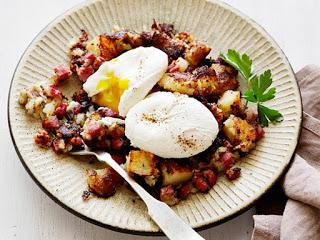
Corned Beef Hash with poached eggs
- Claudette Colbert loved the chicken hash.
- Norma Shearer liked the lamb chops.
- Tyrone Power's favorite was boiled brisket of beef with horseradish sauce.
- Gary Cooper preferred his fried chicken on the dry-not-greasy side.
- James Cagney favored seafood salads.
- Clark Gable and Wallace Beery ordered corned beef hash (served at the Derby with a poached eggs on top). Beery usually had crepes Suzette for dessert - or, on occasion, sponge cake topped with catsup.
- For Louella Parsons, who was always watching her weight, Robert Cobb came up with the Derby's trademark chiffon Grapefruit Cake when she requested a light dessert to complement her "grapefruit diet."
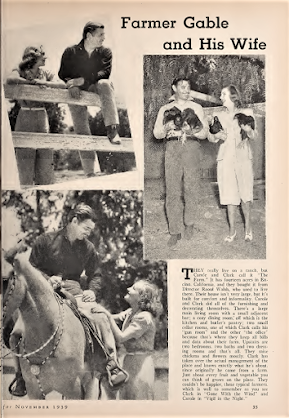
Gable and Lombard on the farm
- Wallace Beery provided trout from his trout farm in Studio City.
- Broccoli came from Barbara Stanwyck and Robert Taylor's place in the San Fernando Valley.
- Corn was supplied by Clark Gable and Carole Lombard from their farm in Encino.
- Wallace Ford provided potatoes for the Derby from his local ranch.
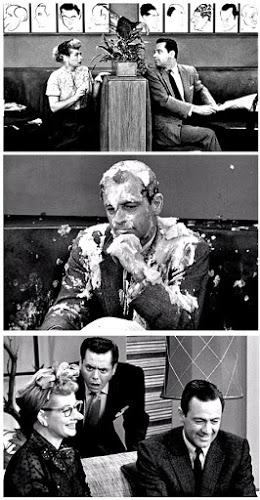
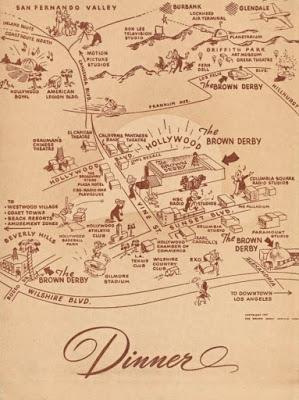
1948 Brown Derby menu cover with locations map
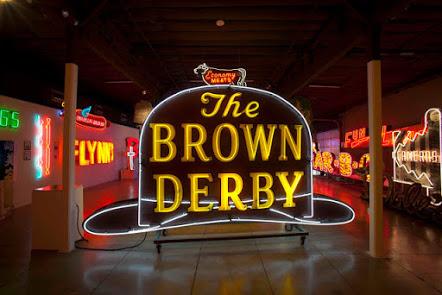
Restored: the Hollywood Brown Derby's neon sign
On a cheerier note, the classic derby-shaped neon sign that had perched, unabashed, atop the Hollywood Derby from the early '30s was rescued from oblivion five years ago. Having changed hands several times over the decades, the fully restored beauty now resides at Glendale's Museum of Neon Art.
For those wishing to celebrate by raising a glass to the opening of the fabled Hollywood Brown Derby on February 14, 1929, I suggest a Brown Derby Cocktail. Though it didn't originate at the restaurant's Bamboo Room, the cocktail is properly named and features grapefruit juice, in keeping with the Derby's signature Grapefruit Cake. According to Liquor.com, a recent compendium of cocktails states that the drink was created at L.A.'s Vendome Club in the 1930s and was named in honor of the Brown Derby. The website also notes that the drink appeared in a book titled Hollywood Cocktails published in 1933. More importantly, Liquor.com promises "a refreshing blend of bourbon, grapefruit juice and honey syrup...a trio of simple ingredients [that] belies the complex taste of the drink, as the honey bridges the gap between the tart citrus and the spicy bourbon." Well, let's find out - here's the recipe:
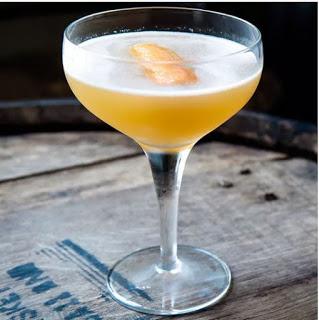
Brown Derby Cocktail
- 1-1/2 oz. Bourbon
- 1 oz. freshly squeezed grapefruit juice
- 1/2 oz. honey syrup (combine equal parts honey and water in a saucepan, stir 'til honey dissolves, cool and transfer to an airtight container; refrigerate for up to a month)
- Garnish: grapefruit twist or grapefruit wedge
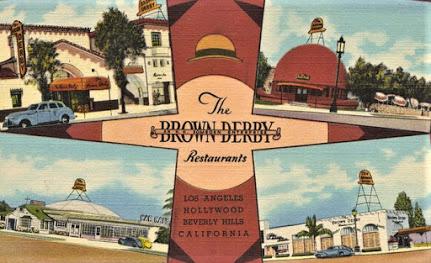
All four Brown Derbys
Sources
Hollywood du Jour by Betty Goodwin, Angel City Press, 1993
Silver Screen magazine, September 1936, "Some Wait for Fame and Some Wait on Tables" as told to Muriel Babcock
The Los Angeles Times, November 27, 2005, "Once in Fashion, the Brown Derby Became Old Hat" by Cecelia Rasmussen
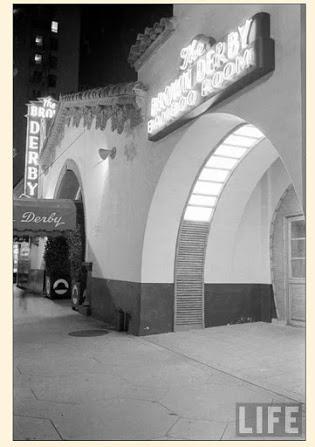
Life magazine 1937, Bamboo Room entrance to the Hollywood Derby

